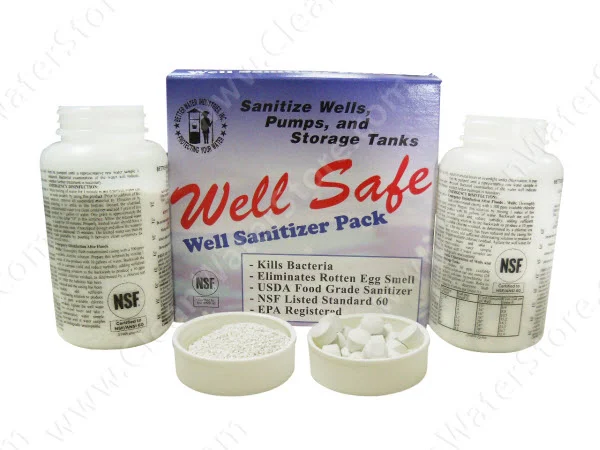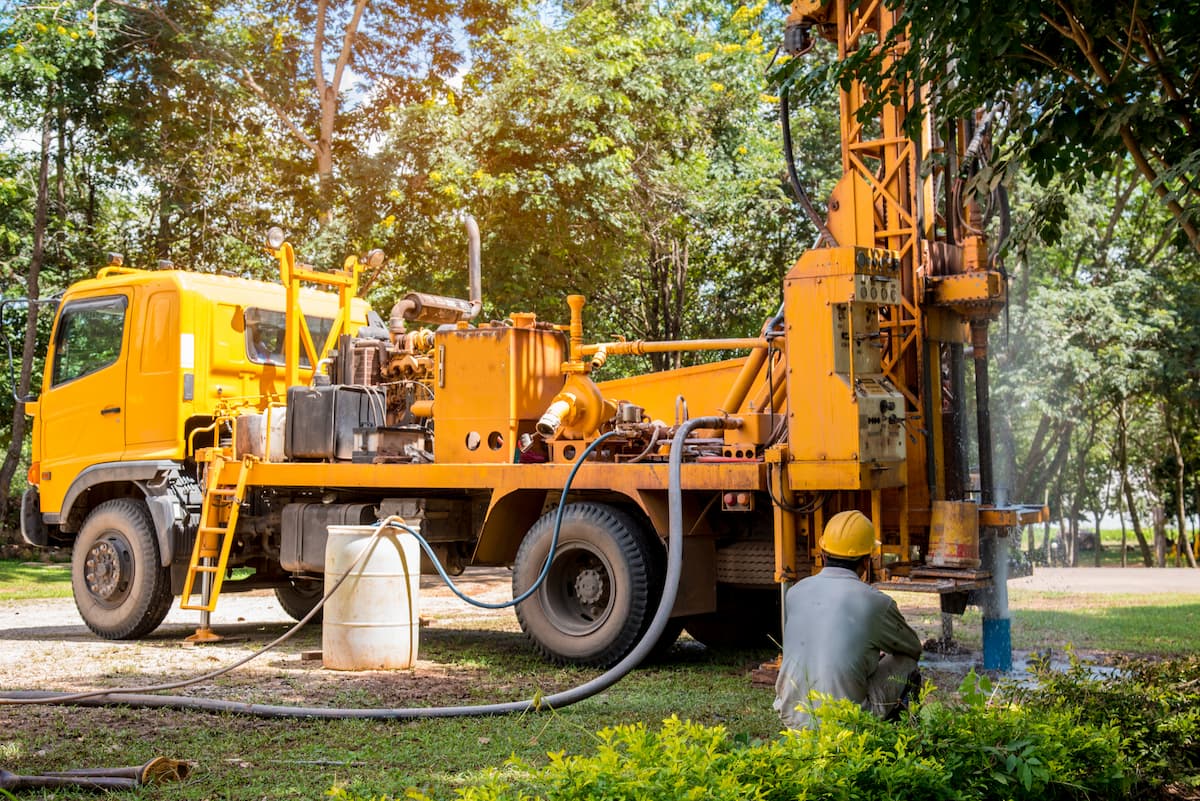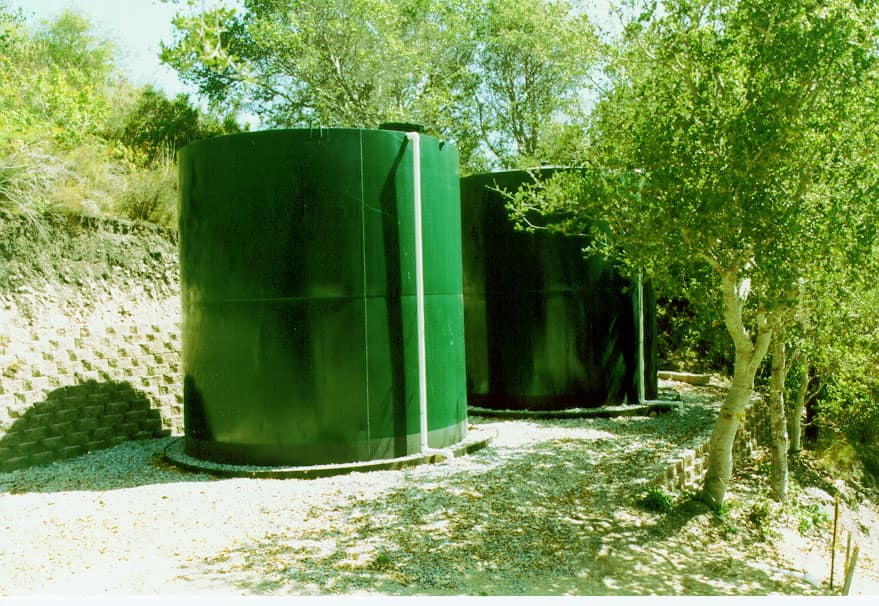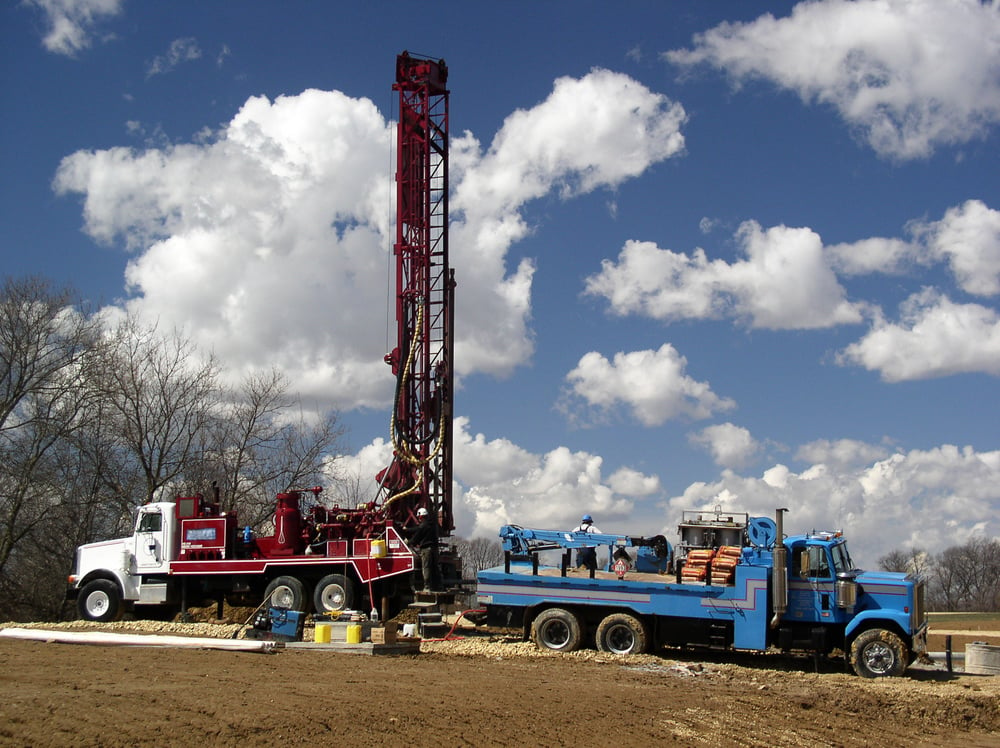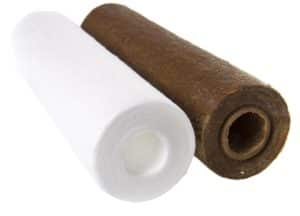How to Set Up A Well Water Chlorination System
Podcast: Play in new window | Download
Subscribe: RSS
In this episode, I talk about how to set up a well water chlorination system and a lot more…
I’m Gerry Bulfin, a water treatment contractor and WQA certified Master Water Specialist.
Today I talk about home well water chlorination system and how, why, and when you should use one in your well water system. I go over questions you should ask before using a chlorinator and then explain how to safely chlorinate your water.
What you will hear in this episode:
1. Deciding on whether to use a well water chlorination system when your water is high in iron, manganese, sulphur odor or especially if you have a combination of those
2. What system to use in treating coliform bacteria in water
3. How to set up a chlorinator system
4. When and how to use UV sterilizers
5. What is a good alternative to chlorination
6. UV rays need to penetrate the water to disinfect it. What to do to make the water fit for UV sterilization
7. Hydrogen Peroxide compared with chlorine in disinfecting residential well waters.
8. Why chlorination is most effective against bacteria
9. What to do after chlorination to completely remove the chlorine from disinfected water
10. When does chlorine become ineffective in disinfecting the water?
11. What is the right amount of chlorine to inject and at what rate?
12. Should you get a solid pellet chlorinator or a liquid chlorinator?
13. What to do when your well is 400 feet deep but your pump is only 300 feet.
14. How to figure out how much chlorine to add to the water or estimating the chlorine demand in the water.
15. The ideal should be that the chlorine residual should be very tiny or none.
16. When chlorine is added to the water, it not only reacts with bacteria but also with other impurities such as hydrosulphite, soluble metals, iron and manganese particles, organic matter, and micro-organisms.
17. Adding chlorine to counteract the oxides iron, manganese, hydrosulphite
18. The more you use the water in the house in order to maintain a constant pressure, you get more or less flow.
If you find the information here helpful, please share it with your friends:
1. It’s really important to have a general mineral analysis of your water because you want to know what the pH of your water is and what treatment to apply.
2. The idea is with the standard chlorine system, you want to inject it into a flow rate that you know is flowing with the same amount.
3. Try to stop the bacteria at the source not at its current location.
Resources:
The Complete Guide Home Chlorination Systems For Well Water
Just text CHLORINE to 44222
Hello. Thanks for tuning in again into the Clean Water Made Easy Podcast. Gerry Bulfin here, I’m a water treatment contractor and WQA Certified Master Water Specialist. I hope you’re having a good day and everything’s going great in your neck of the woods. In this series, you can learn useful, easy to follow tips and information all about well water, well water treatment systems, and how to improve the quality of your well water.
In today’s episode, I’m going to talk about home well water chlorination systems, why you might want to use a chlorinator, how chlorinators compare with other types of systems such as UV, Ozone, and Hydrogen Peroxide as well as different types of chlorinators and questions to ask yourselves when setting one up. We are going to talk about solid chlorine pellet feeders vs. liquid bleach feeders and how to install it so you’re not drinking or bathing in water with chlorine in it.
Free Download
I have a free resource guide of, actually, a little book that goes really well with this today’s podcast called The Complete Guide Home Chlorination Systems For Well Water. This is an easy to follow guide, it’s one of our more popular guides and it has pictures, diagrams, charts, makes it very easy to figure out what’s going on and how to set up a chlorinator. I’m offering this free to listeners to the podcast and you can get your guide by texting the word “chlorine” to 44222 or you can go to cleanwaterstore.com/podcast and look for it there. But if you want to make it easy just text 44222 and put the word chlorine, that’s C-H-L-O-R-I-N-E and we’ll get that going to you.
Step by Step Process
So, you might want to consider a chlorinator if your water is high in iron, manganese, sulfur odor especially if you have a combination of those. As a pre-treatment to your filtration, you might want to consider a chlorinator if your water has coliform bacteria in it. For example, say you have a shallow well, it’s under the influence of surface water and you can’t fix that or you have a cistern fed by rainwater or you may have iron bacteria or sulfate-using bacteria, slime bacteria–chlorinator is good for that.
But a lot of folks will say, “Hey why not Ultra-violet Sterilizers, UV sterilizers, or how about ozone or how about peroxide?”
You know lot of folks want to avoid chlorine for good reason, generally it’s not a good idea to drink chlorinated water although certainly millions of people do every day, it’s very few long-term effects but you know, generally, you’re on your own well, you don’t want to add chlorine in your drink, and so people say “Hey you know, what’s a good alternative to chlorination?” Well, UV’s good, we do recommend it to many customers for many years, successfully using UV light.
However, for UV, the water has to be clear or pure so that the UV rays can penetrate the water so can properly do disinfection. So if you have water high in iron, manganese, and odors, UV isn’t really appropriate. Unless you filter it all first and soften it, then you can use the UV to kill bacteria. But particularly with odors, chlorination works better than UV. Also ozone is really great.
Ozone System
Ozone is actually a much more powerful oxidizer than chlorine. We’ve used ozone since 1989. We have put in hundreds of ozone systems. And the things is that you’ve got a situation where the ozone is a little complicated, it is way more expensive than a chlorinator and there’s a little more to it in terms of setting up and mainly its cost. But ozone, if it was cheaper or simple to deal with, ozone would be better than chlorine for many applications.
Hydrogen Peroxide
Okay, another one that’s getting popular lately is Hydrogen Peroxide. You know, maybe when you were a kid, your mom would put hydrogen peroxide on your cuts to sanitize and clean your cut or bruises. Some people think Gee, it must be a great disinfectant for water. Actually, it’s not really considered a good disinfectant for drinking water especially well water, and especially residential well waters. Hydrogen peroxide is rarely really used in drinking water as a stand-alone treatment process. It’s a very weak biocide compared to chlorine or ozone.
It’s not approved by the regulatory agency as a stand-alone disinfection treatment process. So, hydrogen peroxide is great for removing odors and it does have a good place in water treatment but it’s not good for killing bacterias. So you wouldn’t want to use it as the disinfectant. There are other ways to use it if you combine it with UV or ozone, then you get a very powerful disinfectant because hydroxyl radicals are created. That’s a whole different subject, a more complicated system, but just stand-alone hydrogen peroxide is not enough to kill bacteria.
Most Popular Method of Well Sanitation
Okay, so again, getting back to it, water used for drinking and cooking should be free of odor, slime-producing bacteria, and pathogenic organisms. Although there are different methods out there, chlorination is the most common one used. Reason: it’s cheap, and it’s effective.
So while chlorination is effective against many bacteria, at the normal rates that we’re using, you want to use is as little as possible to do the job. It doesn’t kill all like cyst or parasites. So often it’s combined with filtration. So, usually there’s chlorination, chlorine is injected and you have a certain amount of contact time then you got filtration. That’s the best way to use it.
One question we get often is “Isn’t chlorine bad? I don’t want chlorine. I moved to the country. I have great water, doesn’t have chemicals in it. I don’t want to add chlorine.” And agreed, no one generally wants to drink or bath in chlorinated water.
Fortunately, chlorine is easy to remove from water with activated carbon. So, a typical system would be to get the chlorine in the water, say a pellet feeder or a little diaphragm injecting liquid bleach, and then the water flows into a contact tank to allow time for the chlorine to oxidize the iron, manganese, odor, and/or the bacteria that are in the water.
And then just after that there is just a slight residual chlorine, and then you can use a carbon filter to remove it before it goes to the home. That’s the safest and best way to use it. The goal is to add enough chlorine and have sufficient contact time so you have what we call breakpoint chlorination, where you add just enough chlorine so that it has done its job and there’s a tiny bit left over as a free chlorine and we can measure that.
That’s what our customers do, they measure the free chlorine so that after the contact tank, there’s tiny little bit say 0.2 to 1.0 milligram per liter of chlorine left in the water. Then it goes to a carbon tank and then it just scrubs it and removes all the chlorine, then you have clean disinfected water. Okay, so basically that’s again the recap, but chlorination is proven to be very popular because it is easy to set up, it’s low cost, it’s simple, it’s easy to check the residual and it’s easy to remove.
Measure water pH
Okay, so, questions to ask yourself when choosing the chlorinator, the more important one is, “have I had my water tested?” It’s really important to have a general mineral analysis of your water. You want to know what the pH is. Is nitrate or nitrite present?
That can affect the chlorination process. And with pH, pH is a scale of less than 7 is acidic, 7 be neutral, and over 7 is alkaline. So the higher your pH, chlorine becomes very ineffective. So, if you have very high pH water, you have to add so much chlorine in to the water that it’s not practical, so that’s one thing to check.
Need to know Flow Rate
The other thing that you want to know, “what is the flow rate of the water? How many gallons per minute is the water flowing?” So, on a typical system for instance, a home residential well system, folks will have a submersible well pump in the well. Then it pumps up and there’s a pressure tank, a Hydro pneumatic pressure tank with a diaphragm or bladder inside it, and that allows the pump to turn on, let’s say a 40 psi and off at 60 psi.
So some folks have a variable speed well pump as well, but if you have a standard well pump when it turns on a low setting off at higher setting, then you can install the chlorinator injection point at the point between the well pump and the pressure tank because the flows there pretty much the same all the time. The idea with the standard chlorine system, you want to inject it into a flow rate that you know is flowing with the same amount. That way you can make sure you get the right amount injected every time. So you want to know the flow rate of your well.
The other thing you want to think about is, “How much contact time do I need? And, do I even need a contact tank?” We’ll talk about that in a minute.
Generally, you do. But you want to think about how big of a contact tank do I need after the chlorine has been injected, you want the water to have a certain amount of time to make contact so that it could do its job.
So “what’s the line pressure?” is another good question. For most people this isn’t a big concern because it's usually less than 100 psi, but you want to know what pressure you have.
Pellet or Liquid Chlorinator?
Okay, so once you get those questions answered or you have that information, one thing to consider is “should I get a solid pellet chlorinator? Or should I get a liquid chlorinator?” Solid pellet chlorinators use calcium hypochlorite. Usually, it’s 65, 70% chlorine and is a very, very strong oxidizer.
It has some advantage. Sometimes, people will put pellet feeders on the top of their well so when their well pump turns on, it drops the pellets down the well and this sounds good.
It could be good if it was set up correctly but a lot of times they are a lot of trouble. If you just put a pellet feeder on top of your well and you don’t really know your well, then you don’t really know where the pellets are ending up. You could experiment with it and drop a pellet down there and just see how it’s working. A lot of times they overfeed, and there’s too many pellets that cause trouble with the pump.
Generally, well drillers and well contractors tell people to avoid them because they’ve seen so many problems with them. But, you know, one advantage is you don’t have the liquid bleach to deal with. You don’t have to pour anything, it’s dry pellets and it’s fairly automatic. But again, if you did use a pellet feeder, you would have to know that it would be able to drop the pellet down to where it can do good.
Like for instance, say your well is very deep, 400 feet deep, but your well pump, is a 300 foot. If you drop a pellet down there, it goes all the way to the bottom and, you’re going to have body residuals. In other words, you’re not going to have a steady, even chlorine residual that you can easily adjust.
Pellet feeders, both well hand types and the inline ones, where it is it like canister and the water flows through it and adds a little bit of chlorine, these type of feeders are very hard to adjust to get a very even, consistent rate. Usually, it’s feeding too much chlorine or not enough or it varies. Sometimes there’s not that much then all sudden you get “boom!” boost of chlorine. So, they’re not the best for homes. The inline ones are less expensive than the ones that use the pump with bleach but they’re not as good. Basically, they are a little harder to operate as far as getting the chlorine.
The goal is that the chlorine residual you want is a very tiny amount that will do the job. It’s very easy to test the chlorine with the chlorine test kit. Just like if you have a hot tub or pool and check the chlorine residual every week, you can do the same thing if you have a home chlorinator.
CWS Recommendation
So the one that we usually recommend is a liquid bleach using a metering pump. A metering pump meters a certain amount of chlorine in a very precise rate. They are also called diaphragm pumps or solenoid pumps. And so these pump in a small amount of bleach into the water when the water is running. So, basically there is a solution tank where you pour in bleach, either straight bleach or diluted bleach, then when the well pump turns on the metering pump turns on, and pumps in a tiny bit of chlorine into the water as the water is flowing.
Metering pumps are rated by how much solution they can pump and they come in varying sizes. So, for instance, a common size for home chlorination system are ones that can pump 1 gallon per hour or 24 gallons a day. Some might pump 10 gallons per day or 12 gallons per day. They are all rated different and their pumps are adjustable and you can adjust the amount of chlorine that it is putting in. Typically on these liquid bleach pumps there is also a degassing valve to get rid of any gases that might form in the pipe.
Another type of metering pump is what’s called a peristaltic pump, it squeezes a tube. Those we used to use more of but the tubes constantly fail, but that is just our experience. I know there are some really good ones on market that we do sell, but the metering pumps, the solenoid pumps that have a diaphragm, are generally less trouble and less maintenance than the Peristaltic pump. That’s what we found.
Anyway, there are two different kinds, basically you get a diaphragm pump or a peristaltic pump and they’re set up so generally when they pump, the well turns on and they put a tiny bit of chlorine in to the water.
So, you have to figure out how much chlorine to add to the water and hat is when you’re estimating the chlorine demand in the water. Because when chlorine is added to the water, it not only reacts with bacteria but also with other impurities such as sulphite, soluble metals, iron and manganese particles, organic matter, micro-organisms.
The chlorine demand first must be satisfied before residual chlorine concentration can be established. Once there is residual chlorine concentration it must be maintained during the required contact time to kill all the bacteria. So to adequately disinfect the water it is required to supply the water with a higher chlorine concentration than the concentration required to kill the bacteria.
So basically, if you’re after disinfection as well as treating for iron, manganese and odor, you have to add enough chlorine to counteract the oxides iron, manganese, hydrogen sulfide first so you can have disinfection. So there is general rule of thumb, for iron, we generally try to go for somewhere between 0.6 to 1 part per million of chlorine for every 1 part per million of iron. If it’s manganese, for every 1 milligram per liter manganese we’re looking at 2 parts per million of chlorine. With hydrosulfite, generally, for every 1 part per million of hydrosulfite, we try to inject 2-3 parts per million of chlorine.
In regards to contact time, for iron, manganese, and hydrosulfite, you’re looking for up to 2-6 minutes. For bacteria you want 6-10 minutes. So, if you really do have, (I’ve talked about this in the other episode) a problem with your well with coliform bacteria, first you need to find out what’s the source, why am I having this problem?
Try to stop it at the source. If you have a shallow well or you get a cistern, water coming from the roof or even a spring, then that’s impossible. So, you know you going to have bacteria so in order to set up properly, you need to be very conservative with the contact time. Make sure you have plenty of contact time and then the chlorine residual at the end of it. So that you know that you got disinfection.
So, there is a way to calculate the chlorine demand but you could also, because you can measure for free chlorine, you can go ahead and get the system set up, do your estimations, and then test for free chlorine afterwards. Now without getting too complicated chemistry wise but there is such things as a false free chlorine residual. So if you have a high ammonia, high nitrate in the water as well then you can get a problem with the chlorine interacting with the ammonia.
You just have to know that going in so that is why it’s good to do a water test upfront especially if you live in a agriculture area with lot of farming around, but generally it’s very simple to do. So you just set up your chlorination, get your contact tank and then you measure the chlorine residual afterward.
A lot of this chemistry is discussed in the guide as well. So again, we’ve talked about this already, but pH is very important. It’s most effective if the pH ranges from 6 to 7.5. Also, the warmer the water, the more effective it is. Colder water requires longer contact times and higher concentrations of chlorine.
Alright, so after you determine the flow rate, and you can size your contact tank based on how many minutes you need. For instance, say you need 10 minutes if you had a completely, properly baffled contact tank, then theoretically, you’d need a hundred gallons contact time. If you had 10 gallons a minute, you get 10 minutes. So, oftentimes it’s good to oversize those because usually contact tanks aren’t baffled and you can only realize a percentage of the contact tank as a proper contact time, again, especially if you’re after disinfection where it’s related to your health. So for coliform and E.coli that type of thing, a contact tank is important.
Okay, so very common thing that comes up is that people “okay, I’m going to do chlorinator but how do I turn this thing on and off? I want to set it up automatically so puts in the right amount.” Well, there are 3 ways to do it. Basically, option 1 is the most simplest way and that is you have a standard submersible well pump, or you can have a booster pump too and a pressure tank, but it’s a tide that turns on at one pressure and off at another. In other words, the well pump is not a variable speed well pump. It’s just a standard single speed.
They’re still the most common although the constant pressure variable speed pumps are certainly getting more popular but you have a standard system. So then what you can do is you can just get a 220 volt chlorinator pump, 220 volt metering pump, and wire it so that when your well pump turns on, your chlorinator turns on. That’s very simple to do and so every time it’s running, it’s injecting chlorine.
Now, you could have a situation now where if your well pump failed, but still getting power, it could pump the whole tank of chlorine into the water and in your pipe, that’s pretty unusual. I mean, it’s very random, not likely to happen but that’s one disadvantage of that method. It’s not 100% fool-proof but it is very easy to set up, it’s very reliable. Sometimes you need an electrician to deal with it especially to comply with local codes or if you don’t know how to do basic wiring, but that is an easy and relatively low cost way to do it.
Prewired Flow Switch
The other way to do it, which is very popular, is to get a pre-wired flow switch. So, flow switch is put into the pipe at the place in between the well pump and the pressure tank, and then whenever there is a flow, which would be mostly the same all the time, the flow switch sees flow then it just turns on the metering pump that way.
The flow switch is pre-wired and has receptacle them that you can plug your chlorinator pump in to, and then the flow switch has its own cord and plugs into the wall. That’s a 110V set-up. So that way, a plumber can do it or if you’re familiar with plumbing, but you don’t want to mess with around electrical work, that’s the very easy way to get around having to deal with it, to just get a prewired flow switch.
You can even get ones that aren’t prewired which are lower cost and just wire it yourself. The other thing with flow switch is that then you do have some safety. If there is no flow, the chlorinator is not going to run. The downside of the flow switch is that if your water is really mucky, has iron, sediment, sand and other material in it, then you have to clean the flow switch, it can get stuck. But generally, there are some really good flow switches out there and they’re very reliable but there is a little bit of maintenance in all of those.
Okay, the third way to do it uses a proportional feed flow meter where the metering pump is controlled by the speed of the water. So, what happens there is, say you have a variable speed submersible pump, in other words, the more you use the water in the house in order to maintain a constant pressure, you get more or less flow. Or, say you have a well pump and a pressure tank and you have a orchard or garden or outside irrigation, you don’t really want to chlorinate all the water for the outside or any of the water outside, you just wanted to chlorinate it at the house.
In that case, or say you’re on a mutual water company or community system and you know, no one else wants to chlorinate, only you. What you can do is right before it goes in the house, or anywhere after the pressure tank, you can get what looks like a water meter or a flow sensor and when waters flows through there, it starts to trigger the proportional feed metering pump, it’s a different kind of metering pump. They look the same but it can accept the signal.
What happens is the a pump is more or less based on how fast your water is moving. They are really easy to set up. You just put the flow meter there, attach the wires, plug it in, run some adjustments on it, they’re very easy. It’s just like the flow switch. There is no wiring in a vault. It’s all plugs into the wall. It’s just the metering pump stays plugged in to the wall, as soon as there’s flow, more or less, it pumps faster or slower to keep your chlorine residual where you want it.
So, in the guide we talk about how to determine your chlorine solution strength and metering pump size but basically there is a simple formula, I'll sum it up pretty quickly, you start out with your flow rate and you want to know your applied chlorine residual that you're applying to the water, and you multiply that times 1440 this is minutes in a day, and you divided it by the solution strength.
As an example, say that your well pump is producing 12 gallons minute, and you want to inject 3 parts per million, so 12 times 3 times 1440 and you divide that by the solution strength. Say you have a solution strength of 25,000 parts per million, if you’re using household bleach, that’s 50,000 parts per million. So say you diluted it by half, 25,000, you end up with 2 gallons per day, 2.0 gallons of water per day.
So, bringing this up you don’t have to memorize the formula or anything, but right now you end up with a figure of how many gallons per day of chlorine solution will you pump if you’re well pump will run 24 hours. So then you pick a metering pump or you adjust your existing metering pump, so puts out that amount.
For instance, say you did need a metering pump that did 2 gallons per day, you can adjust your metering pump down so it puts out only that rate. I mean, your well pump might will only run for half an hour a day, or an hour a day. And if you’re using a 2 gallons of chlorine every 24 hours, you can figure that you’re not going to use a lot of chlorine and in fact, most folks don’t use that much chlorine solution.
So, another point is, you don’t want to fill up your chlorine tank with a lot of chlorine solution, and think it’s going to last a year. You want to add fresh chlorine to it every few months. If it is warm, really hot weather, maybe every month. So you only have a little bit in there and add it frequently because it breaks down.
Okay, well this is kind of a longer than a normal episode but I hope that it was useful to you. We covered basics of how chlorinators work, the advantages of it, touch on a little bit about comparison to UV, ozone and peroxide systems and emphasize that it’s very important to know the basics, test your water first, check your flow rate, estimate your chlorine demand and then figure out if you’re using a chlorinator pump, a metering pump, how would you turn your pump on and off.
So again, if you want that guide, just text the word chlorine C-H-L-O-R-I-N-E to 44222 or you can go the cleanwaterstore.com/podcast website and download it there.
Alright, next week we are going to be talking about water softeners, why would I want a water softener or maybe I have a water softener already and I don’t like the salt, what about that no salt water softeners, we’ll explore all that. Thanks again for listening. Have a good day.
Also Read Our How To Guide: How Much Chlorine To Add to Storage Tanks to Kill Bacteria



